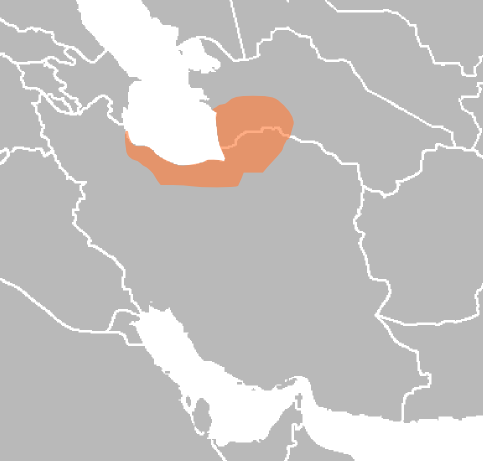'Viking mouse' invasion tracked, BBC noticed this week
http://news.bbc.co.uk/2/hi/science/nature/7645908.stm
"What this suggests to us is that the Norwegian Vikings were taking these mice around and they were taking a particular genetic type; because there are all sorts of genetic types and the particular type that happened to be where the first Vikings picked them up is the one that got spread around."
Geneticists could also track the supposed "Alan's dog"
The Spanish Alano today is a legacy of the Alan tribe which entered the Iberian Peninsula with the Vandal hordes during the early part of the 5th Century. The Alani were one of the Sarmatian peoples which inhabited the plains along the River Don to the northeast of the Sea of Azov in modern-day Russia. Formidable horsemen and skilled bowmen, these warring nomads were also famous for their dogs
http://en.wikipedia.org/wiki/Alano_Espa%C3%B1ol
Molosser
http://en.wikipedia.org/wiki/Molosser
Alaunt
http://en.wikipedia.org/wiki/Alaunt
"Paul Strang, a cynologist and a noted authority on the Great Pyrenees, observes in his book "The Complete Great Pyrenees", that the existence of massive native breeds today in Turkey, Iran, and Southern Russia could support the theory that the ancestors of today's mastiff breeds came from the Middle East. Other serious cynologists, such as David and Judy Nelson, agree with that possibility. Remains of domestic dogs from 5500 years ago have discovered in many parts of Iran of today. But the territory of Iran of today is not the same lands of old Persia which was much bigger and included the lands from India in east to Greece in west. Even the areas of southern Russia and the central Asia of today (Caucas, Azerbaijan, Armenia, Georgia and...) or better to say the origin area of Mid. Asian and Caucasian shepherds were the Iranian territories and passed to Russia after peace between the two countries, just about 100 years ago. These areas were the "lands of mastiffs" for thousands of years. Four kinds of old Persian dogs were reported by the classical authors" (Source: Persian Mastiffs a brief historical summary about the ancient mastiffs of Iran)

http://irandogs.110mb.com/breeds/mastiff/mastif.html
Hyrcanian Mastiff, "Lion dog"

Brazilian Fila (Fila Brasileiro), also known as Brazilian Mastyff

The Fila Brasileiro is believed to have been developed from a number of breeds, predominantly the Mastiff, the Bulldog and the Bloodhound (the last contributing to breed's loose skin). The Fila Brasileiros were found primarily on large plantations and cattle farms from where they originated. Reportedly, they are also excellent tracking dogs and were used to track slaves and fugitives
http://news.bbc.co.uk/2/hi/science/nature/7645908.stm
"What this suggests to us is that the Norwegian Vikings were taking these mice around and they were taking a particular genetic type; because there are all sorts of genetic types and the particular type that happened to be where the first Vikings picked them up is the one that got spread around."
Geneticists could also track the supposed "Alan's dog"
The Spanish Alano today is a legacy of the Alan tribe which entered the Iberian Peninsula with the Vandal hordes during the early part of the 5th Century. The Alani were one of the Sarmatian peoples which inhabited the plains along the River Don to the northeast of the Sea of Azov in modern-day Russia. Formidable horsemen and skilled bowmen, these warring nomads were also famous for their dogs
http://en.wikipedia.org/wiki/Alano_Espa%C3%B1ol
Molosser
http://en.wikipedia.org/wiki/Molosser
Alaunt
http://en.wikipedia.org/wiki/Alaunt
"Paul Strang, a cynologist and a noted authority on the Great Pyrenees, observes in his book "The Complete Great Pyrenees", that the existence of massive native breeds today in Turkey, Iran, and Southern Russia could support the theory that the ancestors of today's mastiff breeds came from the Middle East. Other serious cynologists, such as David and Judy Nelson, agree with that possibility. Remains of domestic dogs from 5500 years ago have discovered in many parts of Iran of today. But the territory of Iran of today is not the same lands of old Persia which was much bigger and included the lands from India in east to Greece in west. Even the areas of southern Russia and the central Asia of today (Caucas, Azerbaijan, Armenia, Georgia and...) or better to say the origin area of Mid. Asian and Caucasian shepherds were the Iranian territories and passed to Russia after peace between the two countries, just about 100 years ago. These areas were the "lands of mastiffs" for thousands of years. Four kinds of old Persian dogs were reported by the classical authors" (Source: Persian Mastiffs a brief historical summary about the ancient mastiffs of Iran)

http://irandogs.110mb.com/breeds/mastiff/mastif.html
Hyrcanian Mastiff, "Lion dog"

Brazilian Fila (Fila Brasileiro), also known as Brazilian Mastyff

The Fila Brasileiro is believed to have been developed from a number of breeds, predominantly the Mastiff, the Bulldog and the Bloodhound (the last contributing to breed's loose skin). The Fila Brasileiros were found primarily on large plantations and cattle farms from where they originated. Reportedly, they are also excellent tracking dogs and were used to track slaves and fugitives

